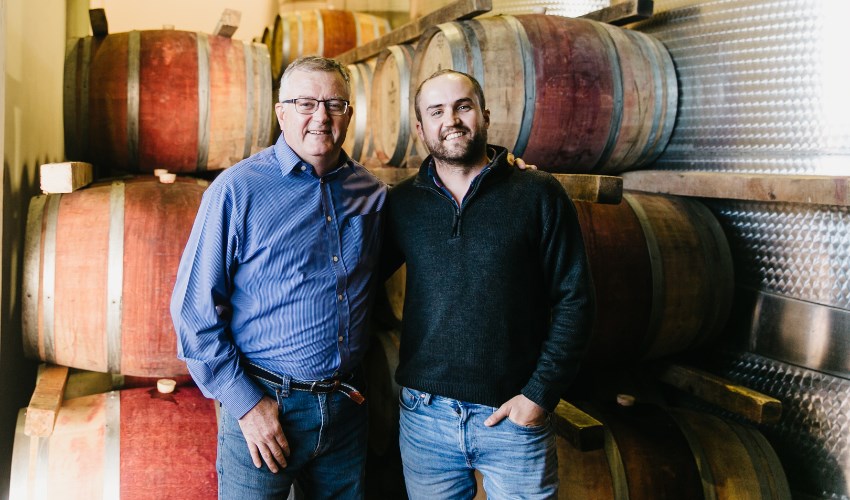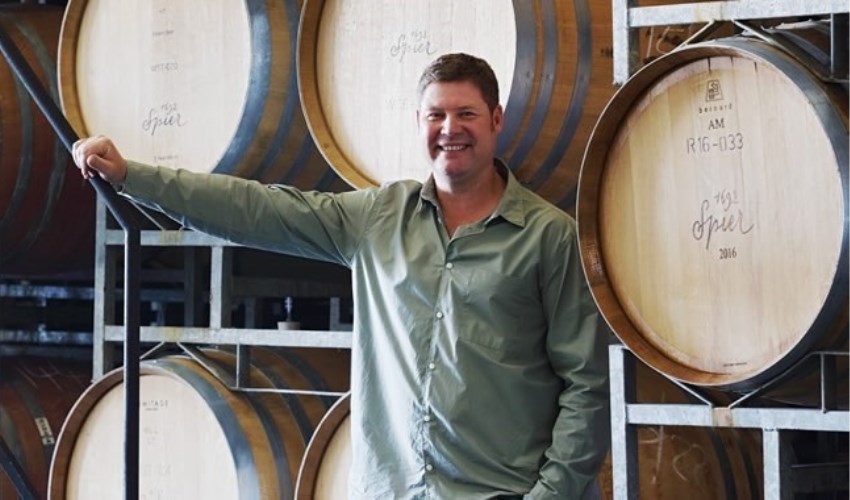At recent media tastings, winemakers from some of the Cape’s leading cellars have demonstrated the evolution of their flagship red blends over vertical flights. While the focus of many wine shows and top ten competitions tends to highlight single varieties from Sauvignon Blanc and Chenin Blanc to Merlot and Pinotage, the art of the blend allows winemakers even more space to exercise their creative powers where the proverbial whole of the assemblage is greater than the sum of the parts.
The last forty years has seen the emergence of an exciting new wave of red blends in the Cape, ranging from classic Bordeaux-style and Rhone-style assemblages to blends of Italian and Portuguese varieties and the homegrown Cape blend based on Pinotage.
The foundations were laid by many of South Africa’s heritage brands which developed the first dry red blends:
- Alto Rouge (first released in 1924)
- Chateau Libertas (1932)
- Douglas Green (1942)
- KWV Roodeberg (1949)
- Tassenberg (1936)
- Zonnebloem (1930s)
Nederburg Baronne (1973), the brainchild of legendary Nederburg cellarmaster Günter Brözel, a crossover blend of Cabernet and Shiraz, was another trend-setter.
At a benchmark vertical flight in June of Tiara, Simonsig’s flagship Bordeaux-style blend, Johan Malan paid tribute to the landmark modern blend released by Billy Hofmeyer of Welgemeend in 1979.
Heralded as the Cape’s first Bordeaux blend, it was closely followed by Meerlust’s iconic Rubicon blend made by legendary Giorgio Dalla Cia – two wines which inspired a new generation of winemakers to pursue their own big red blends in the 1980s and 1990s based on the five core Bordeaux varieties. Other Simonsberg cellars soon turned to big Bordeaux blends inter alia Delheim Grand Reserve, Kanonkop Paul Sauer, Muratie, Warwick Trilogy, De Toren Fusion V, and Vilafonte.
On taking over from legendary patriarch Frans Malan in 1982, scion Johan Malan says Simonsig “crossed its own Rubicon” and began to refocus on red wines – based on lower yields, less extraction, dryland vines, better wood, and replanting of varieties to create the building blocks for a big Bordeaux blend. Reaching a turning-point in 1990, Simonsig released its first Tiara, a blend of Cabernet Sauvignon and Merlot, naming it Tiara – “a wine fit for royalty”. Inspired by the elegant Cab-based blends of the Pauillac appellation, Malan says he sought to marry a powerful, masculine Cabernet Sauvignon tempered by a softer, feminine Merlot on the broad shoulders of Cabernet Franc.
Over three flights of Simonsig Tiara from the magnificent 2001 to 2018, father and son Johan and Michael (winemaker since 2017) took media on a journey through the evolution of a five-way varietal blend which now includes Cabernet Franc (1997), Petit Verdot (1997), and Malbec (2009).

Johan Malan, Simonsig director of wine, and his son Michael Malan, red winemaker of Simonsig.
“You can overcome the weaknesses of some vintages by changing the blend,” explained Johan, showing how replanting virus-free vines has played a key role in terms of improving natural acidity and stability for maturity and longevity. Ex-red winemaker Debbie Thompson (1999-2019) is one of three generations of winemakers who have made Tiara the five-star signature wine of Simonsig.
While tasting the stellar vintages of 2015 and 2017, Michael Malan emphasised that “the style of wine the consumer likes is playing a determining role” in the evolution of Tiara over the years.
“When you get excited about older wines, you’re missing the mark,” adds Johan. “It’s not what consumers are looking for.”
Virus-free grapes, less time on skins, gentler extraction of tannin and more subtle oaking has made these fruit-driven red wines more accessible at a younger age. Michael calls it low and slow winemaking. While older vintages of Tiara age magnificently, showing elegance, grace and finesse, the last flight of Tiara 2015 (the magnum the best of the whole line-up), 2017 and 2018 (the new release) hit the sweet spot with succulent, fruit driven wines in the modern style.
Cabernet Sauvignon is the calling card of Stellenbosch and the cornerstone of the big red blends of the home of the Cabernet Collective. In the inimitable words of Johan Malan, “We didn’t choose Cabernet Sauvignon. The variety chose Stellenbosch.” Our lesson in big Bordeaux blends continued at Spier (1692), an iconic cellar in Stellenbosch.
Celebrating thirty years of its modern renaissance under the Enthoven family since 1993, Spier, named winery of the year in Platter’s SA Wine Guide 2022, has broken new ground in many ways. The first winery in the world to win vegan accreditation lives up to its custodian of the land credo and “growing for good” logo – from ethical monitoring of suppliers, eco-conscious waste recycling, innovative FairTrade tourism, and organic initiatives.
Over a tasting of Spier’s Frans K Smit 2017 and a vertical of Creative Block #5 blend over the 2011-2018 vintages, Frans Smit (cellarmaster of Spier for 27 years) and Johan Jordaan (red winemaker since 2007 – and new cellarmaster) spoke about the holy grail of a great Bordeaux-style blend. They spoke about how vintages are rated by the quality of red wines in general – and how wines are made very differently today to drink younger compared to thirty years ago. Cabernet Sauvignon and Merlot are the two cornerstones of Creative Block #5, named after a five-way blend with Cabernet Franc, Petit Verdot and Malbec. Johan Jordaan emphasized that “you can’t pick Bordeaux varieties when they are not phenolically ripe” – and that the 2010 and 2015 vintage were perfect vintages.
An optical grape sorter with a R250 000 camera, one of the first used in South Africa, is one of the secrets to Spier’s handling of Bordeaux varieties. Jordaan comments, “We get the more black berry character of Bordeaux than the tomato leaf style” – in a big blend with alluring violet and fennel aromas, cassis, liquorice and fine-grained cedar tannins.
Once the fynbos veil of red varieties grown in the Helderberg lifts – a key characteristic identified by legendary André van Rensburg of Vergelegen – it reveals the underlying blackcurrant/cassis character. Johan emphasises that the Helderberg (home to major Bordeaux style producers like Lourensford, Morgenster and Vergelegen) is one of the few areas where Merlot, a very finicky variety, performs well – creating the sweet “Pomerol” spot of Creative Block #5 – a variety which is the backbone of Spier’s organic reds.

Johan Jordaan, cellarmaster of Spier.
Another tasting of Tokara’s flagship Director’s Reserve Red, a four-way Bordeaux-style flagship, confirmed the hero role played by Cabernet Sauvignon in the big blends of Stellenbosch.
Getting to know 24 blocks of Cabernet Sauvignon, the backbone of Tokara (65% of vines), has taken viticulturist Aidan Morton two decades in the field. Attention to detail is the mantra of this showpiece winery on the Simonsberg renowned for its impeccably planted contours, focus on Bordeaux varieties and flagship red blends (along with neighbours Delaire Graff, Thelema, Rustenberg, and Glenelly).
Morton has spoken about “precision viticulture” since the beginning. Tokara was one of the first to utilise aerial photographing of its vineyards via infra-red NDVI (normalised digital vegetation maps).
Harnessing state-of-the-art technology to measure the vigour of vineyards enables Tokara to pick grapes at optimum ripeness, to create wines of balance and texture which give expression to the Stellenbosch terroir. Winemaker Stuart Botha concludes that these high-lying, terraced vineyards enable Tokara to walk a tightrope between the styles of the old and the new worlds, balancing the more austere tannins of the old with the riper, succulent fruit of the new.
“Tokara’s vineyards are dominated by Cabernet Sauvignon. The Director’s Reserve Red represents the best of Tokara. This is the wine that gives insight into the Tokara brand – a wine with incredible purity and linearity.”
Forty years later, Stellenbosch remains at the forefront of the Cape’s quest for the perfect big red blend.